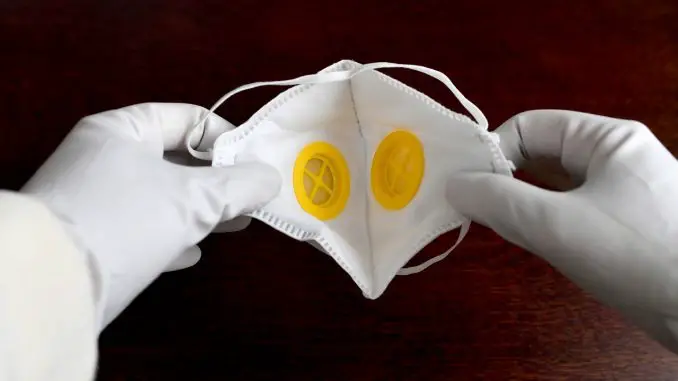
A global pool of forces is underway within companies, organizations and academia to obtain effective drugs and vaccines as quickly as possible against the new coronavirus and covid-19 disease. But we need to understand the time it takes to develop new treatments, approved for wide use.
When will vaccine and effective drugs come against the coronavirus and covid-19? This is the most common question that is being asked to us in the pharmaceutical industry right now regarding the ongoing corona outbreak. This is understandable, given the widespread concern that prevails. It is hoped that new medicines and vaccines can be developed quickly. News and rumors are spread, more or less daily, with claims that the solution is “here soon”.
Therefore, in the pharmaceutical industry, we have an important task in explaining why, despite intensive research and development work, it will take time before new vaccines and drugs are approved and can begin to be used by healthcare in the fight against global infection.
It usually takes over ten years to develop a vaccine from early research to government approval and large-scale production. If that time can be shortened to 3-5 years, this would be considered record-breaking.
There are special circumstances surrounding the situation right now. Never before has such a rapid collection of medical power been made. Intensive research has been launched globally. These are universities, small biotechnology companies, and large pharmaceutical companies, both individually and within different constellations, and with both private and public funding. Currently, there are over 30 different vaccine projects, which have been started since mid-January. It is important to remember that this is a virus that was completely unknown just a few months ago. Many companies and research groups have literally let go of something else.
The development time for new vaccines can be reduced by having readiness for this type of outbreak. A good example is CEPI, an international cooperation initiative for vaccines made up of public and private actors, on the initiative of the Norwegian government. This includes universities, private companies, and public actors. Funding is available for the first development part, and modern technical platforms for vaccine development are in place.
In addition, several large pharmaceutical companies with deep expertise in vaccines can utilize their respective platforms and approaches. Through a combination of modern genetic engineering and proven technical platforms, new vaccine candidates can be produced faster today than before. In this initial development step, there are a number of new ways to design and construct vaccines that save a lot of time.
The force collection has already produced the first result, a vaccine candidate against the new coronavirus is reportedly ready to begin clinical trials at the end of April after record-breaking development. But it is important to remember that this is just a candidate and not a finished vaccine.
The next step is for the candidate to go through a clinical trial program in three phases through tests on humans. Then the vaccine candidate should show that it gives protection against the disease and does not give serious side effects. In the case of vaccines given to healthy people, the tolerance to side effects is very low. As a comparison, quite serious side effects are tolerated for, for example, a drug given to severely ill cancer patients.
The time for the development of the candidate vaccine has been shortened through modern technology and preparatory work. But the time for the clinical trials, which usually takes several years, cannot be shortened accordingly. Here it is important to carefully document the effect and safety of the people included in the studies.
After the clinical trials are completed, extensive documentation on the vaccine is required, which is compiled in an application for approval to the responsible authorities, the EMA in Europe and the FDA in the USA. Authorities are reviewing the vaccine’s effect, quality, and adverse reaction profile. If the evaluation is positive, the manufacturer will be given permission to start manufacturing and selling vaccines, which can be used by the health service.
Within the clinical trial program, a number of thousands of people can benefit from being vaccinated. But after that, the vaccine will start to be manufactured on a large scale and it can then involve hundreds of millions of doses.
Vaccines are complex and the safety requirements in manufacturing are rigorous, which makes production complicated and time-consuming. Production takes place in a sterile environment and quality control and various tests are performed after each stage of production. A vaccine can contain hundreds of different stages of production. In addition, the distribution then sets requirements for an unbroken refrigeration chain to the clinic where vaccination is to take place.
Regardless of how much different processes are streamlined, it can be stated that a new vaccine will probably not be in place for widespread use before the ongoing outbreak has cleared.
But these types of infections tend to recur, as has been the case with Ebola, for example. The efforts that are being carried out right now can therefore be invaluable in new outbreaks.
What to do in the meantime? The ongoing work to limit the spread of infection as much as possible is of course central. This is not least because there is no antiviral drug with documented efficacy against covid-19 disease. At the same time, a number of research projects have been started on whether drugs developed against other similar diseases can have an effect on the disease covid-19. Right now, WHO is putting its main hope for a drug candidate that was originally developed against Ebola. Other substances are also tested.
We in the pharmaceutical industry have a great understanding of the widespread concern that exists for the corona center, and that many are hoping for quick medical solutions to the global health threat. Intensive research and development is also ongoing. But both vaccines and drugs must show documented good efficacy and be safe to use. Everything else is unthinkable.
Leave a Reply